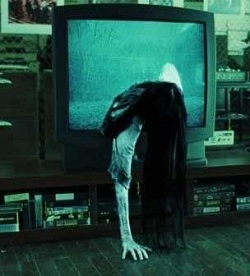What I feel went well:
1. Lighting: 
For the shots in the bedroom I wanted the light to appear natural because the connotations of them are supposed to be more comfortable than the later shots. I originally thought that it would therefore be a good idea to have natural lighting. However as I mentioned in my ‘Preliminary Task Animatic’ post the British weather does not always produce the most warm lighting. To make these shots look warmer I decided to use other light sources for example my main light and side lamp. As I said both of which have ‘warm orangey’ bulbs. When I began to film I realised that the lighting still was not enough so I went around the house and borrowed other light sources – my fathers bed side lights. I then positioned all of these lights outside of the shot and filmed. The effect still isn’t as warm as I would like but it definitely looks natural in the long shots (see bellow- right). However in my close up high angle shot of the phone (see bellow – left) you can see that there is definitely artificial light source, which you couldn’t before, which means there is a slight continuity error there.


2. The Brief:
Overall I believe the filming process was a success in the context that I followed all the rules and the specifications laid out in the brief. Considering that I followed my animatic and storyboard there was no way I could not follow the brief as they both adhered to it. The only risk was that I might mess up the 180 degree rule when filming practically. I confess that when I first began the over the shoulder shots I filmed from the wrong side. However because I kept checking my storyboard and playing back I quickly realised what had happened and re-filmed that specific shot.


What I need to improve on (and what I can do next time):
1. Sound:
As is often the problem with small handheld cameras the sound quality is not brilliant, by this I mean that it sometimes becomes difficult to hear the dialogue. One thing that my tutor suggested was that I should try using another recording device synchronously near the actors while filming. This removes the difficulty of trying to get inexperienced actors do dub over the original footage, it can be very tricky to get this perfect. It also means that you can make the specific dialogue louder. Most smart phones (mine included) have a perfectly acceptable recording system on them so I wouldn’t have to buy any recording equipment. Next time I definitely plan to try this technique out, hopefully during my opening sequence.

2. Actors:
The ‘actors’ in my video were me and my friend Elliott, I have acting experience he does not. The problem with having myself in the film was that I had to keep checking the recording afterwards to make sure everything had worked correctly; I was able to flip the camera screen in my direction but it just made the whole filming process unnecessarily longer. I would have liked to have someone else play my part however I could not find someone who was able to do it when I needed. This is not an excuse, I’m sure there was something I could have done to find someone but I was not able to.

Considering the added difficulty (which I don’t think effected the sequence quality – I was able to overcome it) next time I would really like people with some acting experience to do all the acting. My performing background means I can demonstrate what I want, however I always really need to be behind the camera.
3. Movement:
After I finished filming the sequence I thought about all the different shot types I used and I know I had a variety. To name a few: Wide shot, Mid Shot, Extreme Close Up, Over the Shoulder, Point Of view… However all of these shots were static, stationary on my tripod. I did not pan for any of them. I’m don’t think that every sequence has to have camera movement, especially for such a short, simple sequence as this, but retrospectively I think that I should of had some sort of movement, like a pan, if only to demonstrate that it’s something I’m capable of.
4. Continuity:
I believe that my continuity throughout the sequence was (that I know of, I will make sure to ask people after uploading the finished video to check for any errors) good. The only thing I found was, as I mentioned, a small lighting error. This proves that I always have to be alert of mistakes to be made, and keep reviewing the recording while filming to check for any mistakes. Despite this small lapse in concentration, continuity was constantly on my mind; I even went as far as forbidding my actor from touching his shirt as it would cause the creases in it to move.









































